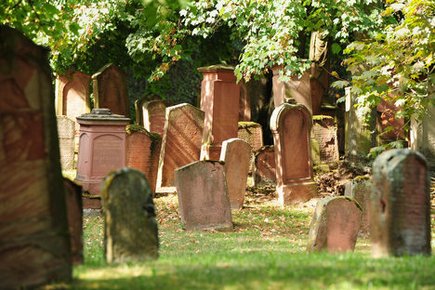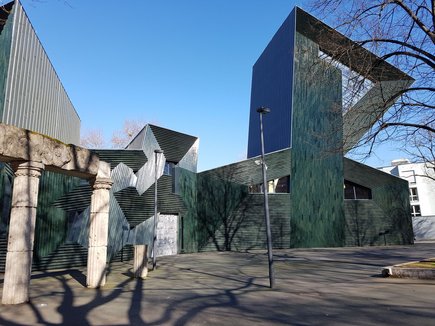
Speyer, Worms, and Mainz are also known as the ShUM cities, a name coined from the initial letters of their medieval names in Hebrew. They formed a unique cluster that significantly influenced the culture, religion, and administration of justice in the Ashkenazi diaspora. That is why the ShUM sites have been approved as UNESCO World Heritage Sites as of june 2021.
The Jewish community of Mainz, or Magenza, is one of the oldest in the German-speaking world, dating back to the 10th century. During the Middle Ages, scholars and teachers based in Magenza turned the city into a vibrant centre of religious and cultural life.
Interested visitors can book a guided tour through "Magenza - the Jewish Mainz".

The spectacular New Synagogue was inaugurated in Mainz in 2010. Through the form of the synagogue building, architect Manuel Herz metaphorically refers to the scholarship of ShUM and the scholarship of Gershom ben Yehuda. He was also called Meor ha-Gola, "Light of the Exile", and was one of the most famous Talmud teachers of his time as well as having a formative influence on the Jewish legal discussion.
Viewed from the side, the building depicts the Jewish liturgical term kedusha, i.e. a blessing for the sanctification or elevation of profane and secular objects. Throughout the building there are further references to Jewish discourses as well as to the Torah or "piyyut" created in the ShUM cities. The monument, erected in the present, anchors itself in the scholarship of ShUM, combining tradition and the present.
The Mainz State Museum hosts a large collection of Jewish cult objects, mainly gold and silverwork, dating from the 18th and 19th centuries. They belong to the collection of a local society known as "Verein zur Pflege jüdischer Altertümer in Mainz" who, on 3 October 1926, opened the Museum of Jewish Antiquities in the side tract of the Main Synagogue of 1912. The museum was dismantled during the Nazi period, and most of the artefacts, ceremonial objects, documents, and manuscripts were destroyed during the Kristallnacht pogroms of 9 November 1938. Many of the items that were salvaged were handed over to the Mainz State Museum on permanent loan by the Jewish community of Mainz and are now on public display.